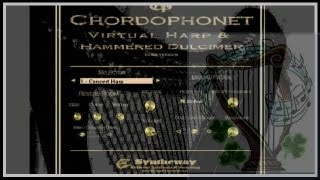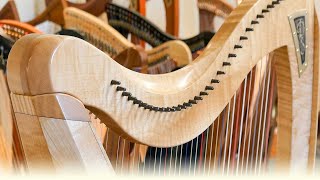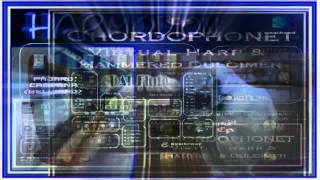Wednesday, 24 December, 2025г.
















Где искать: по сайтам Запорожской области, статьи, видео ролики
пример: покупка автомобиля в Запорожье
Ormond House (English Country Dance) Syntheway Chordophonet Hammered Dulcimer VST Win MacOSX
http://syntheway.net - Ormond House (English Country Dance) circa 1721. Instrument: Chordophonet Virtual Harp & Dulcimer VSTi (Hammered Dulcimer mode) (Windows, Mac OS X see Requirements below)
Chordophonet Virtual Harp & Hammered Dulcimer VSTi Official Website:
http://chordophonet.syntheway.net/
Software Description:
CHORDOPHONET is a Virtual Harp and Hammered Dulcimer sample based software instrument, featuring Celtic and Concert Harps, Pre-recorded Harp Glissando and Upward-Downward Harp Glissando, and Hammered Dulcimer modes.
Features
* Mode Selector to switch between Harps, glissandos and hammered Dulcimer sounds:
- Concert Harp
- Celtic Harp
- Harp Glissando (Single and Multiple, Ascending and Descending)
- Upward-Downward Harp Glissando (Two handed)
- Hammered Dulcimer
- Hammered Dulcimer Octaves
* Biquad Filter, The values are automatically computed when you select any of the filter types. Filter switch includes: LP (Low pass), BP (Band pass), HP (High pass), notch, peak, low pass and high pass shelving filter with adjustable cutoff frequency and bandwidth.
* Each pluck was recorded in 16-bit resolution (44100 Hz sampling rate), using special equipment in a low noise environment.
* Pre-recorded Harp Glissando and Upward-Downward Harp Glissando, capturing the sounds produced by rapid sliding motion of fingernails or finger tips across strings (Ascending gliss: keyrange C3..B3 - Descending gliss: keyrange C4..B4). Alternatively Glissandos can be played by running one's fingers up and down the white keys of the keyboard, creating an ascending and descending gliss effect.
* Release Time parameter.
* Virtual Room: Free variation of acoustic ambience thanks to complete separation of the Harp or Dulcimer and the room.
* Affordable price and user-friendly attitude are sure to attract many enthusiasts and musicians.
* FULL MIDI Automation: Complete MIDI Continuous Controller. You can use this to automate parameter changes from a sequencer, or to control your synthesizers from an external MIDI control surface.
..................................................................................
Installation Notes
Windows Requirements:
- Use these Syntheway VST plugins in your favourite DAW MIDI Sequencer host like: FL Studio, Ableton Live, Cakewalk SONAR X1, Steinberg Cubase, Nuendo, PreSounus Studio One, Cockos REAPER, Mixcraft, MAGIX Samplitude, Sequoia, Energy XT, ACID Pro, Orion, VSTHost, SAVIHost, n-Track Studio, Cantabile, Adobe Audition and many others ( Check out complete list of VST compatible hosts here: http://syntheway.com/vstcompatiblehost.htm )
- Place the dll file / files into VST Plugins Folder.
- 500 MHz Processor (Pentium, Celeron AMD or equivalent) minimum.
- RAM: 128 MB or higher recommended.
- Windows Operating System : Windows XP, Windows Vista, Windows 7, Windows 8 / x86 (32 bit).
- For Windows x64 (64 bit) test it first with VST Bridge, jBridge or BitBridge.
..................................................................................
Mac OS X Requirements:
Chordophonet Virtual Harp and Hammered Dulcimer is also available for Apple Mac OS X (Audio Unit, VST for Mac, NI Kontakt NKI Files, Apple Logic EXS24 MkII Sample Library)
http://syntheway.com/Syntheway_Chordophonet_Virtual_Harp_Hammered_Dulcimer_for_Mac_OS_X.htm
..................................................................................
http://syntheway.com
http://syntheway.net
......................................................................................
Note: This is one of the most complex tunes in John Playford's The Dancing Master, the most important source of English Country Dance music from 1651 to about 1728. "Ormond House" was probably named in honor of James Butler, the second and last Duke of Ormond. The Butlers were powerful Irish lords and ardent Jacobites, whose cause was lost along with their lands and title early in the 18th century. As Protestant nobility the Butlers held Ireland for Charles I and Charles II, but maintained a residence, Ormond House, in London on St. James's Square.
Теги:
Syntheway Chordophonet harp celtic hammered Dulcimer gliss glissando ascending descending upward downward virtual instrument VSTi VST Daniel Laiseca MIDI FL Studio Cubase free download Windows Linux Mac MacOSX OS X exs exs24 nki kontakt logic garageband ableton live apple audio unit plugin audio unit macosx sample library .component concert virtual harp hammer files harp vst Ormond House english country dance irish Ireland virtual dulcimer dulcimer vst scottish folk
Похожие видео
Мой аккаунт


 У вашего броузера проблема в совместимости с HTML5
У вашего броузера проблема в совместимости с HTML5


